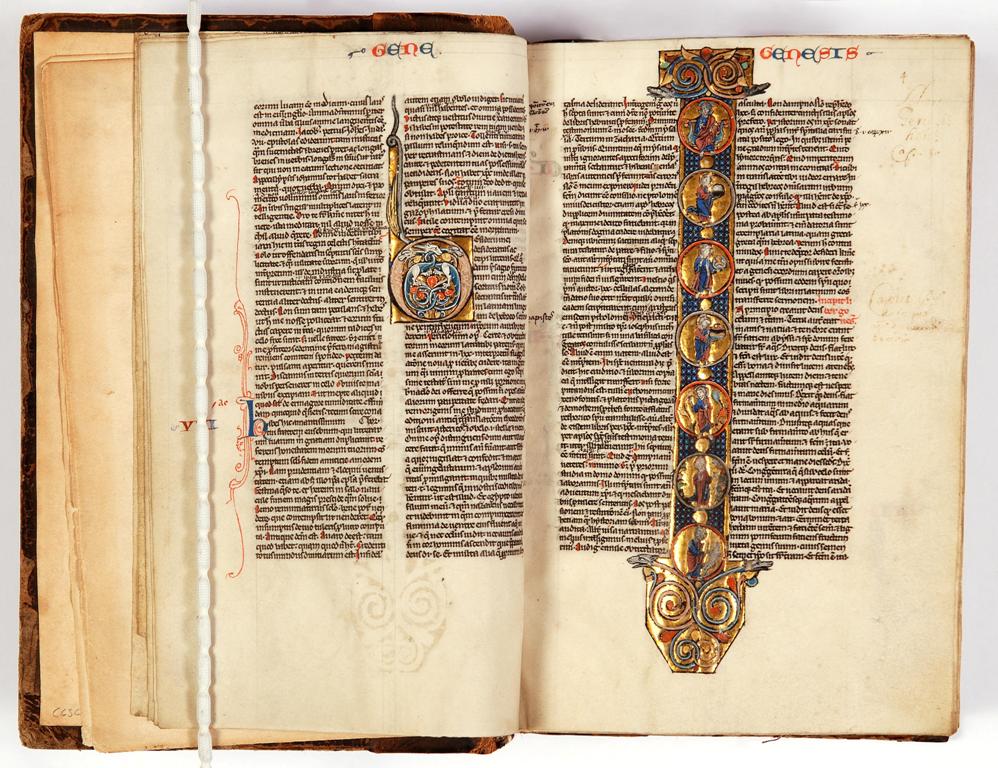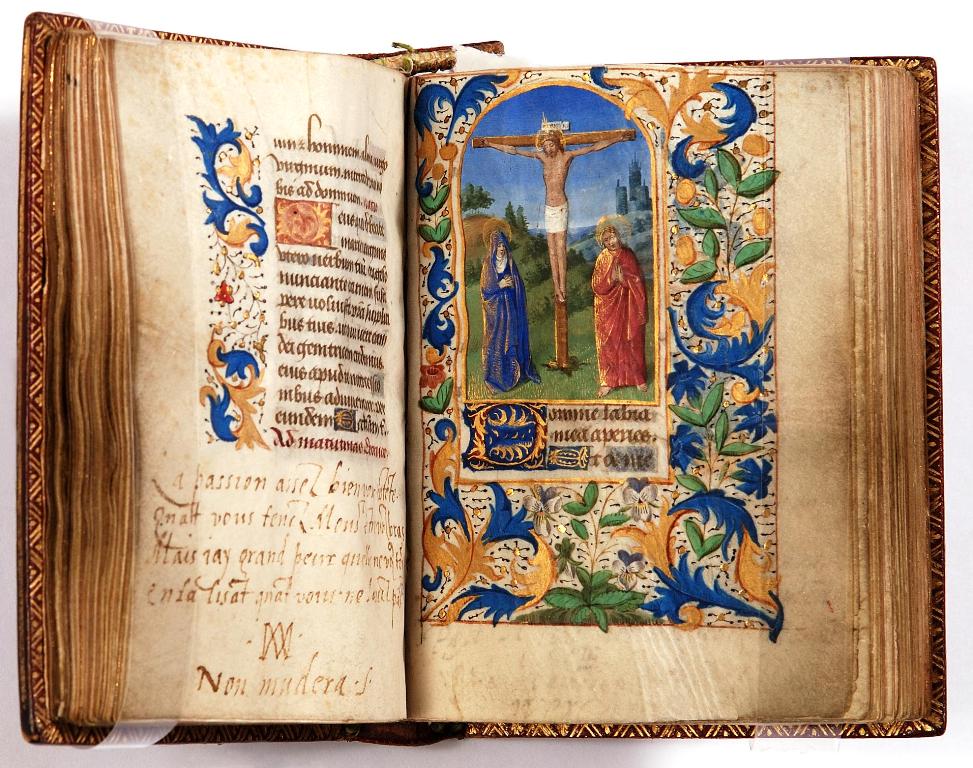
Conserving and digitising the rare manuscripts in the Ruskin Collection
An urgent challenge for the Guild, and for the Ruskin Collection's custodians Sheffield Museums Trust, is the condition and presentation of the collection of 12 rare and precious illuminated manuscripts, five of which are illustrated below. Each item requires specialist conservation care to ensure its condition remains stable, or can be improved, for the long term, and digitisation is essential if we want to be able to share the full glory of these fragile objects with visitors, without causing them harm. As part of our commitment to good stewardship of our assets, the Guild will be looking to solicit funds that can go towards making this exciting project a reality. We will share further information about this work as it happens.
Guild Director Nichola Johnson spoke at the Guild's AGM in November 2023, as follows:
Amongst the thousands of items in the Guild’s Ruskin Collection, cared for on our behalf by Sheffield Museums, is a small but highly significant group of historic manuscripts.
Between the early 1850s and the late 1880s, Ruskin acquired around ninety mss, ranging in date mainly from the twelfth to the late sixteenth centuries, with twelve of these remaining in the Guild’s collection today. During his lifetime – in keeping with his assertion that his collections were for use as much as for their beauty, craftsmanship and historic or scientific interest- Ruskin annotated, gave away, sold on, dismembered, framed and even, occasionally, cut up and reassembled them in collages. On a blank leaf of an early Greek bible, for example, Ruskin recorded the names of the first Guild companions! There were further disposals after his death and so now most of the mss formerly owned by Ruskin are to be found in major public and private collection both here and around the world. Although some of those now in Sheffield are indeed of great beauty and historic significance, their true value surely lies in what, as a group, they tell us about Ruskin and his approach to his collections.
Because of their fragility, the Ruskin mss cannot easily be seen by the public and so, with the ultimate aspiration of their being digitised and their pages becoming widely accessible online, the Guild has decided to fund a preliminary conservation survey. This will identify those manuscripts which need expert conservation work, following which the Guild proposes to seek external funding for the conservation and digitisation itself. Our hope is that Companions, whatever way they can, will support this exciting project…..so watch this space for further news!
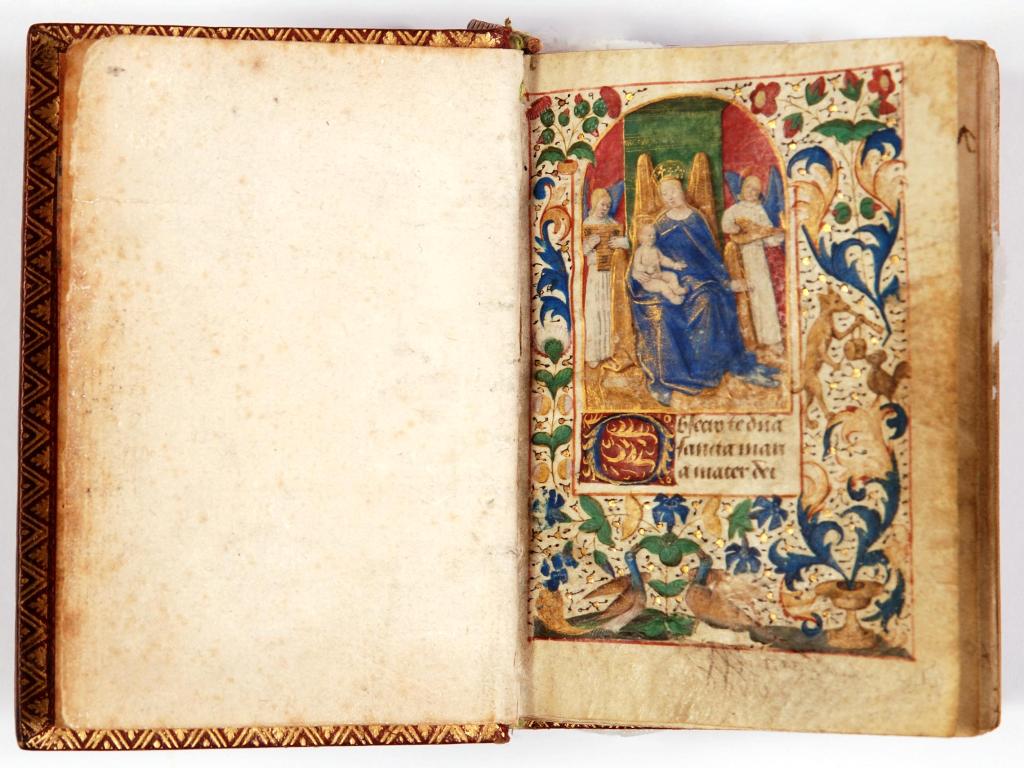

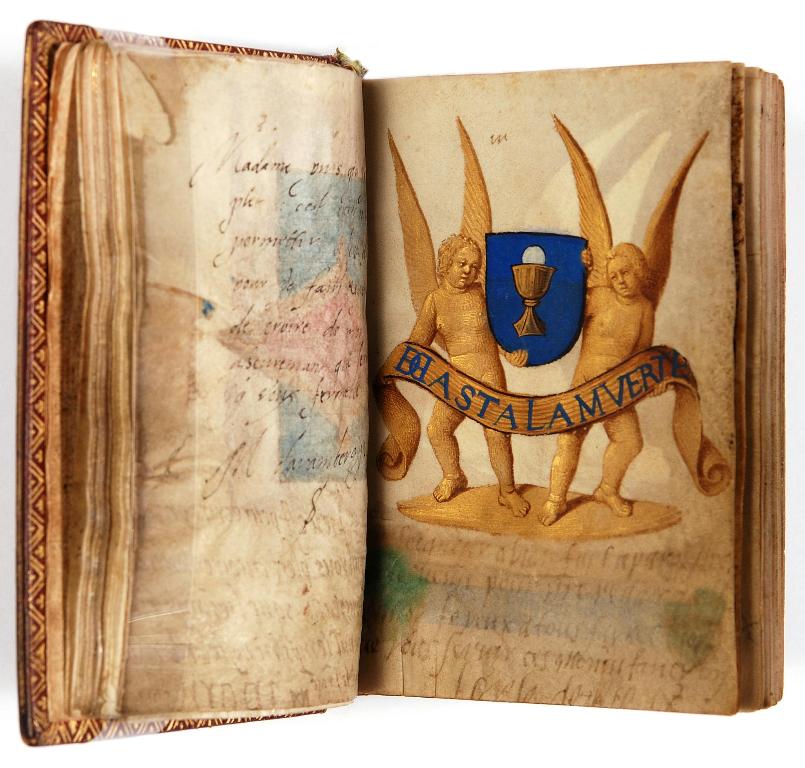
The 'de Croy' Book of Hours, by or workshop of Jean Fouquet, about 1415-20.
The 'de Croy' Book of Hours
by or workshop of Jean Fouquet, about 1415-20
On vellum
1460-1465
CGSG03210
Book of Hours (Horae Beatae Mariae Virginis), vellum, bound in red leather (eighteenth century) with red leather case. 178 folios containing 25 full page illustrations and numerous illuminated borders. Numerous later inscriptions of the sixteenth century in black ink, and several sixteenth century illustrations
This manuscript contains prayers to be read throughout the day and on different days in the year. It was used in the late 1500s by a French aristocrat, Lady Diana de Croy, as an autograph book. It includes a message from Mary, Queen of Scots.
It is possible the illustrator of the book of hours was Jean Fouquet of Tours
Number of borders:153
Number of Illustrations: 22
Number of illuminated initials (decorative text in more than one colour) approximately 1156
No historiated initials
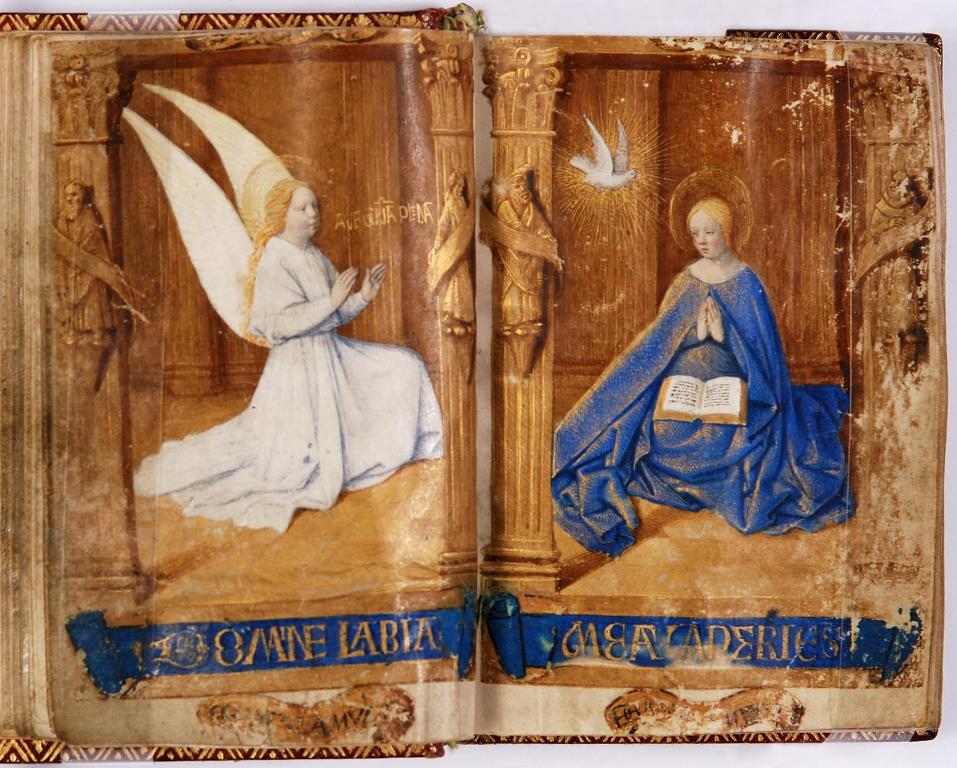
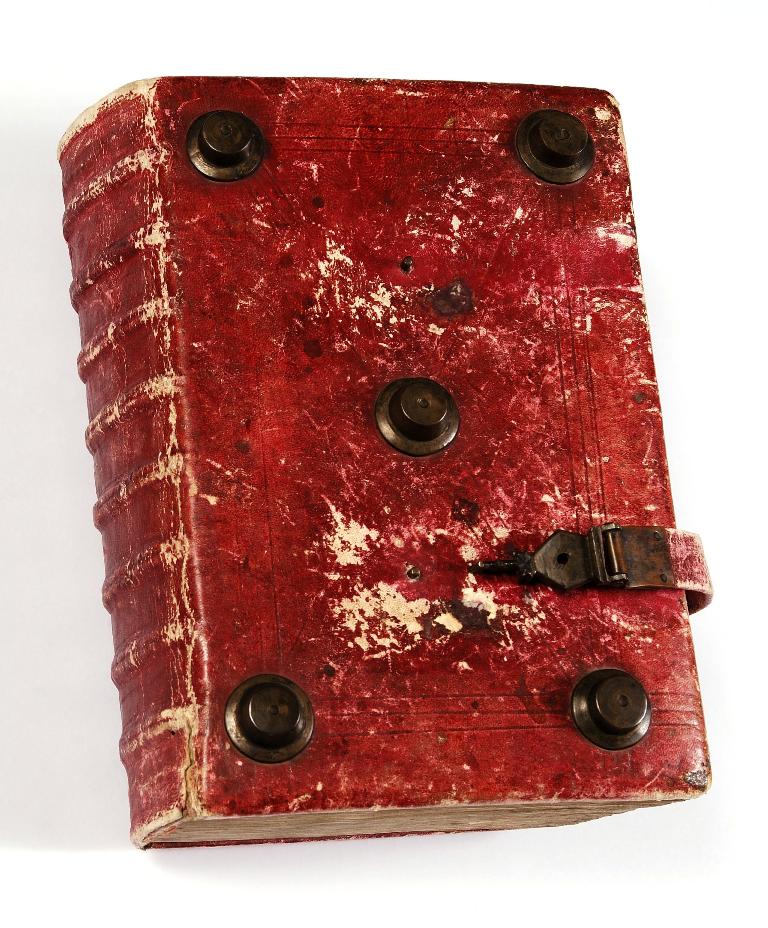
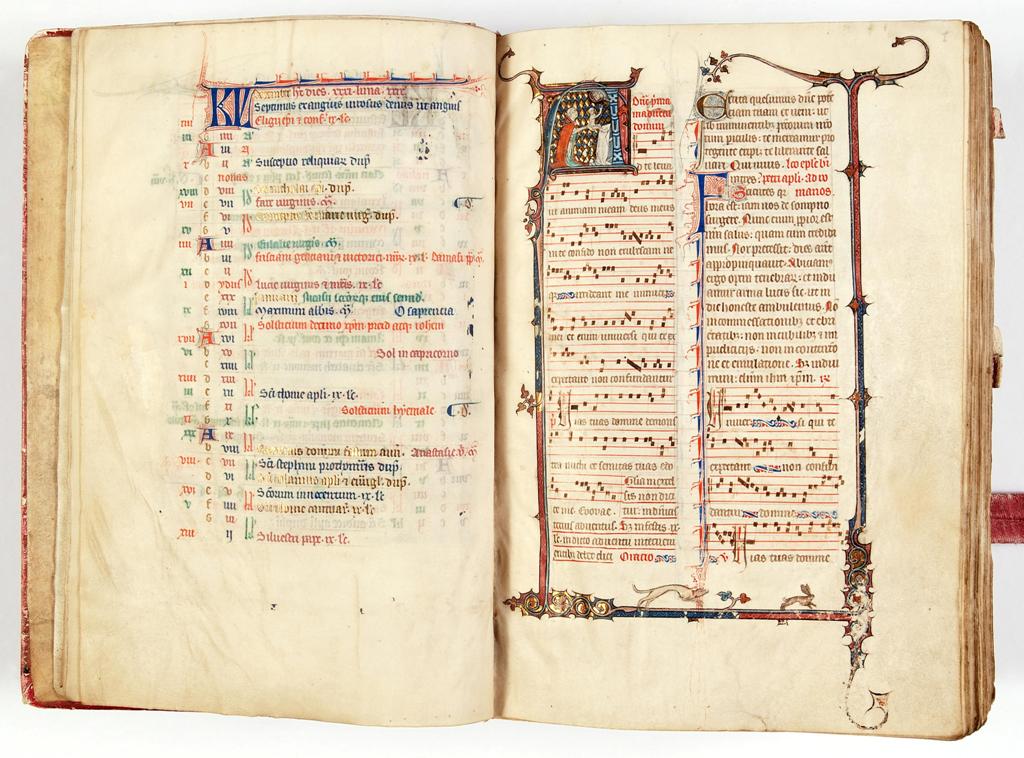
Parisian Missal, French (Paris), about 1350-75
Parisian Missal
French (Paris)
On vellum, about 1350-75
CGSG03211
Book, bound in red leather with five metal bosses on each cover and a metal clasp. 466 folios, the first six being a calendar. Rich decoration around initial decoration and further illuminations. Numerous pages of musical notation, with the clefs being faces. Two full page illustrations. Colouring of illuminations etc. in red, blue, orange, purple and green. Fillers in text in blue red and gilt.
The Missal contains all the prayers, readings and music necessary for Mass. It was made for the monastery of St Denis, near Paris. Charles V, King of France, obtained it in 1380 and it remained in the French Royal Library until the 1800s. The brass buckle and feet are original.
The Missal was produced in Paris, possibly for the monastery of St Denis. It was later catalogued into the library of Charles V and became part of the Royal Library at Versailles. 2006-?2008 open at folios 294 v and 295 r, musical notation and text with illuminated capitals and on illustration.
2 Illustrations
5 borders
18 historiated initials (human figures)
5761 illuminated initials, 'illuminated' taken as decorated
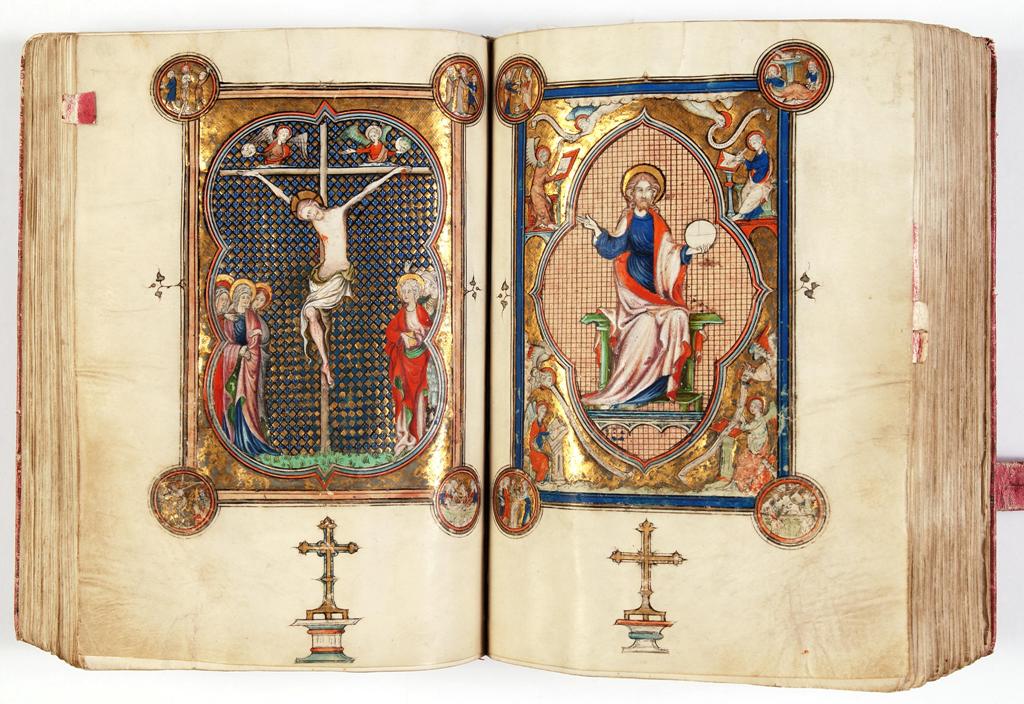
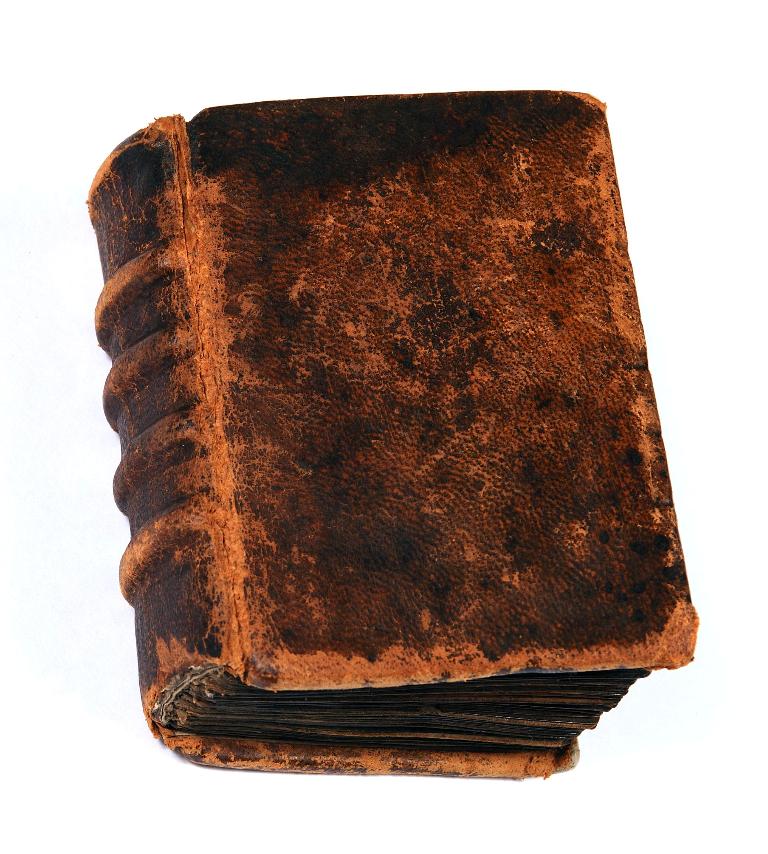
Book of Hours, Unknown French, early 14th Century
Book of Hours
Maker unknown
Early C14th, Parchment, leather
Handwritten book in black ink with illuminations and decoration in red, blue and gilt. 108 folios. Decoration includes animals, foliage and grotesques.
Number of borders and frames: 1
Number of illustrations: 5
Number of illuminated initials (decorative text in more than one colour): 67
Number of historiated initials (initials with portraits or human faces): 8
Probably from North-Eastern France.
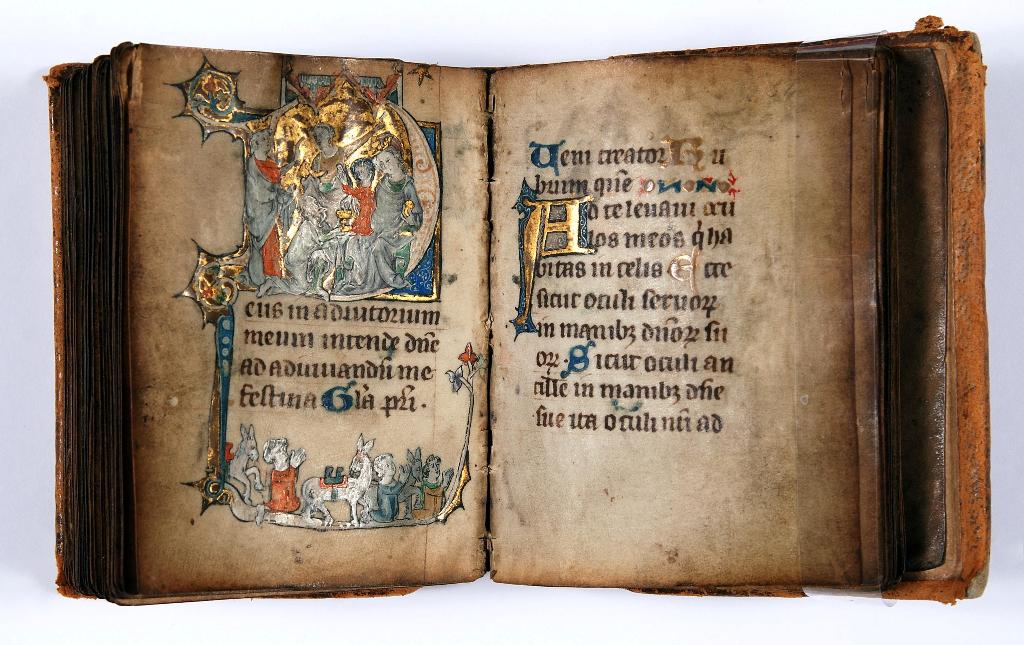
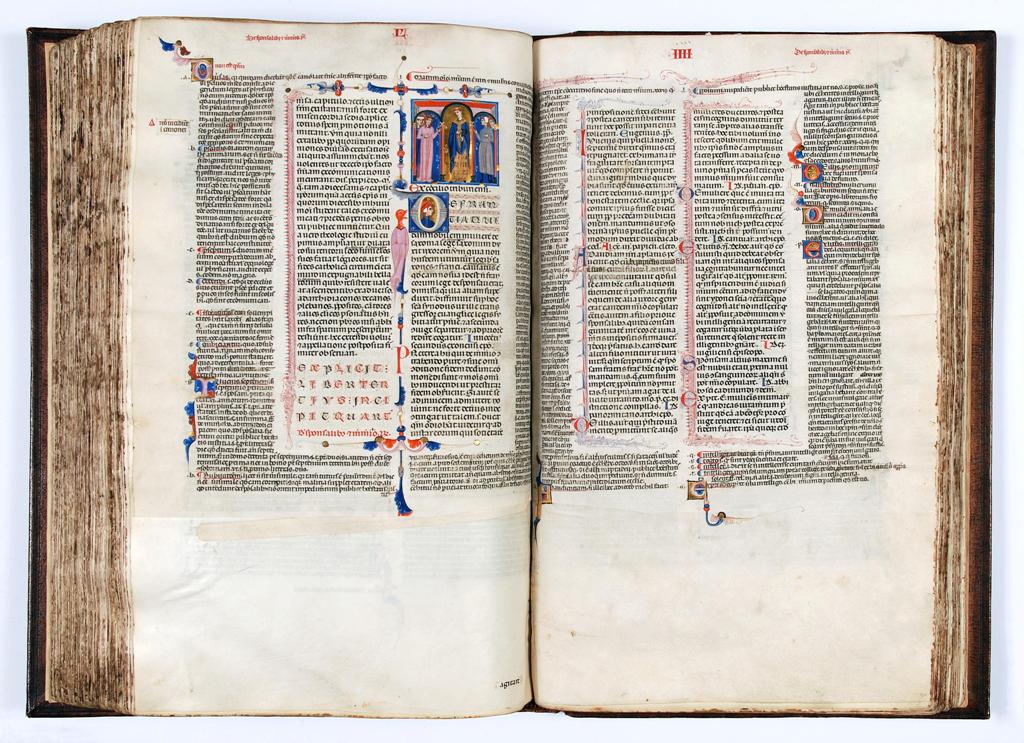
Decretales Gregorii IX et Innocenti IV, Maker: Unknown Italian, C13th
Decretales Gregorii IX et Innocenti IV
Maker: Unknown Italian
Previous owners: William Stuart, 1798-1874 & Bernard Quaritch, 1819-1899
late 13th Century
parchment, leather
CGSG03637
Handwritten book in black ink with illumination and decoration in red, pink, blue and gilt. 292 folios. Decoration includes animals, foliage and grotesques, and portrait or historiated capitals. Many borders with tails reaching to base of page and several larger illustrations
Decretals are official letters of decisions made by popes. Rather than laws, they are written as the Popes definitive answers to problems and disputes encountered by Catholic authorities. The first decretals were written down as a series in the AD380s and 390s. Pope Gregory IX commissioned his personal priest, St Raymond of Peñaforte to compile a new set of Decretals to replace all previous versions in 1230. At this time the papacy was the most influential ruling authority in Europe, and Pope Gregory would have wanted, though this commission to assert his power.
Pope Gregory sent copies of his new Decretals to different Universities including the University of Bologna, in northern Italy. It is probable that this particular manuscript was made in Bologna, probably in the late 1200s. The scribe might have been called Albertus, as his signature appears in the text of the book.
Number of borders and frames: 0, but 32 long tails
Number of Illustrations: 3
Number of illuminated initials (decorative text in more than one colour) 4066
48 historiated initials (initials with portraits or human faces).
Probably from Pisa, the name 'Albertus Matap[?] appears, possibly the name of the scribe. The arms, possibly of the de Rossi family of Pisa appear.
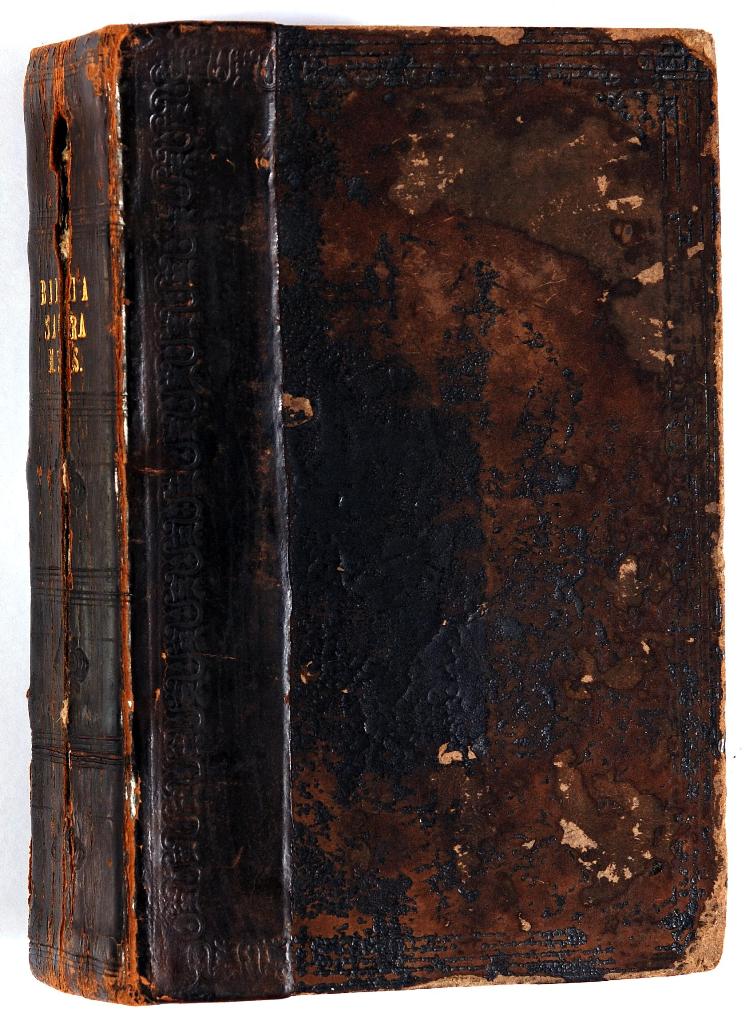
Biblia, Maker: Unknown French, mid 13th Century
Biblia
Maker: Unknown French
Previous owner: Prince Augustus Frederick, Duke of Sussex, 1773-1843
mid 13th Century
CGSG03670
Handwritten book in black ink with illumination and decoration in red and blue ink. 496 folios. Decoration includes animals, foliage and grotesques, with chapters and capitals in alternating blue and red. Some gilding and yellow, and green ink also used
Number of borders and frames: 5
Number of Illustrations: 1
Number of illuminated initials (decorative text in more than one colour) 1320
66 historiated initials (initials with portraits or human faces).
Written 'Aux Capucins de Mante'
